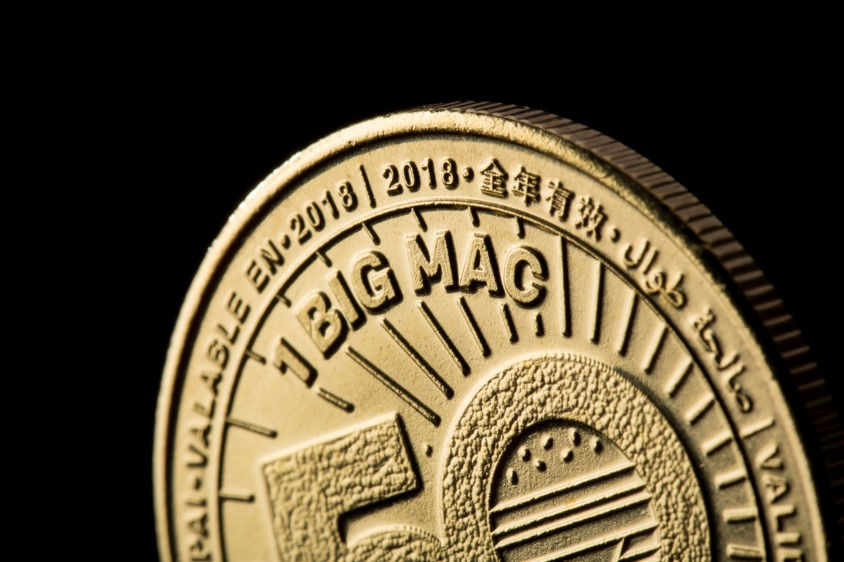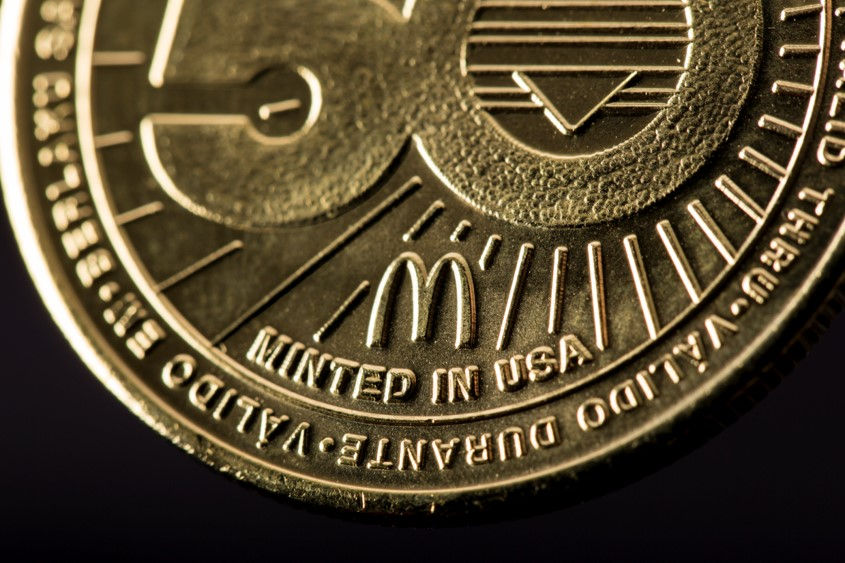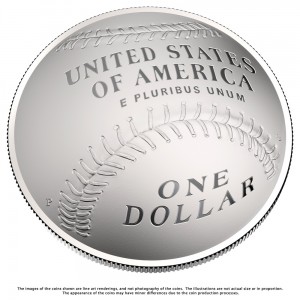Weekly World Numismatic Newsletter for November 7, 2021
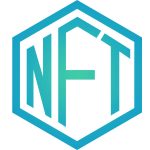 A news item popped up that announced a dealer is selling Non-Fungible Tokens (NFT) for 13 rare ancient coins. Following the news, collectors ask if NFTs should be part of numismatics.
A news item popped up that announced a dealer is selling Non-Fungible Tokens (NFT) for 13 rare ancient coins. Following the news, collectors ask if NFTs should be part of numismatics.
To answer the question, we must define the NFT. An NFT is a piece of data created using the complex math of cryptography to make it unique to tie it directly to the owner and the item. It is non-fungible because it represents a one-to-one relationship between the owner and the asset. An asset is fungible because it is interchangeable. A coin can be a fungible asset.
A token is an object that represents something else. In numismatics, a token represents money. The NFT is a piece of data that represents the owner and its tie to the asset.
Are you confused? So is most of the market that has run face-first into this new allegedly fantastical concept of owning a piece of something.
But is it an NFT or cryptocurrency numismatics?
According to Merriam-Webster, numismatics is “the study or collection of coins, tokens, and paper money and sometimes related objects (such as medals).”
First, NFTs are not numismatics. NFTs are a deed of ownership. Deeds are not numismatics.
Cryptocurrency may be considered a related object by definition, but does it represent money or currency in any form?
Cryptocurrency is an asset. The asset is assigned a value based on market forces. Are those assets numismatics? No! Cryptocurrency is an asset that does not represent anything. It is a set of bits and bytes created using complicated math.
The creators of cryptocurrency use names similar to physical assets to influence a market. For example, crypto-mining is a series of calculations to find large prime numbers. Searching for large prime numbers is something researchers have been calculating since the discovery of computers. In college, I worked on a project that calculated the largest prime number held at the time.
Today, someone decided to sell the idea of this complex math to calculate a series of prime numbers within constraints. Cryptocurrency is buying the number stored in something called a digital wallet. Owners of these numbers can trade them the same way you can trade stock or your car to a dealer.
Cryptocurrency is not legal tender. A governing authority does not authorize it. It is also not representative of anything except mathematics.
There is nothing in the definition of the trade of numbers to make it part of numismatics.
And now the news…
 → Read more at artnews.com
→ Read more at artnews.com
 → Read more at einnews.com
→ Read more at einnews.com
Weekly World Numismatic News for August 12, 2018
All the news that fits, we print!
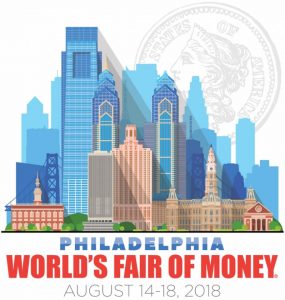 Trying to keep up with the news in the numismatic community has been like trying to keep up with the news in Washington. This week it was coming in fast. The bottom line is that next week is the American Numismatic Association’s World’s Fair of Money in Philadelphia.
Trying to keep up with the news in the numismatic community has been like trying to keep up with the news in Washington. This week it was coming in fast. The bottom line is that next week is the American Numismatic Association’s World’s Fair of Money in Philadelphia.
Based on some of the press releases, here are some of the highlights for those who will be in attendance:
- The ANA Museum Showcase will feature the finest known 1792 Half Disme, formerly owned by the first United States Mint Director David Rittenhouse and other rarities.
- PCGS will display the “The J&L 144 Complete Set,” the All-Time Finest set of classic commemorative coins in the PCGS Set Registry
- The Numismatic Crime Information Center will offer a one-day training class on “Numismatic Crime Investigations” for local, state and federal law enforcement officers.
- PCGS will also display one of the 1787 gold Brasher Doubloons and seven of the finest known 1780s New York colonial era copper coins in an educational exhibit.
- The U.S. Mint will display three 1933 Saint Gaudens Double Eagle gold coins including a previously undisclosed specimen that was voluntarily and unconditionally given over to the government by a private citizen who requested to remain anonymous.
- The finest known 1794 Flowing Hair silver dollar, graded PCGS MS63+ CAC, will be displayed at the Tangible Investments booth.
- ICTA’s Anti-Counterfeiting Task Force will exhibit a five-case display of counterfeit coins, precious metals bars, and grading holders on special loan from the Cherry Hill, N.J., office of Department of Homeland Security. These items were confiscated during their investigation of Jonathan A. Kirschner, who pleaded guilty impersonating a federal agent while selling counterfeit coins and bars and unlawfully importing counterfeit coins and bars into the United States.
- The ANA, Numismatic Literary Guild, and others will be presenting their annual awards during the week.
In other words, it will be a jam-packed week for the numismatic junkie.
Too bad the show cannot be live-streamed for those of us who either cannot attend or will only be able to attend for a short period of time.
I will attend the World’s Fair of Money on Thursday and will leave after the ANA Board Meeting on Friday morning. More on this later.
And now the news…
A gold coin from the time of Andronicus II and Andronicus III Paleologus (14th century) has been discovered during archaeological excavations at the Rusokastro Fortress site on Bulgaria’s southern Black Sea coast, the Regional Historical Museum in Bourgas said.  → Read more at sofiaglobe.com
→ Read more at sofiaglobe.com
Tiny hands fly up, waving pastel green play money in the air as children offer up bids with high-pitched, eager squeals. “I have $6!”  → Read more at houstonchronicle.com
→ Read more at houstonchronicle.com
Gold nugget discovery deemed museum quality DALLAS – An enormous, 40-ounce gold nugget, nicknamed “Lightning Bolt” for its jolting, bright yellow glow and rarity beyond any diamond found on Earth, could take top lot honors in in Heritage Auctions’ Nature & Science Auction Aug.  → Read more at antiquetrader.com
→ Read more at antiquetrader.com
It has been revealed that Lord Ian Stewartby, who resided near Biggar and died in March at the age of 82, left £1.8m worth of his nationally-renowned collection of ancient coins to Glasgow University’s Hunterian Museum.  → Read more at carlukegazette.co.uk
→ Read more at carlukegazette.co.uk
It was originally worth five shillings but Australia’s rarest coin, believed to be discovered in a bushranger’s hoard, is on the market and expected to fetch more than $500,000. For the third time in its history, the “Hannibal Head” holey dollar, discovered in Tasmania in 1881, and presented to the Governor of Van Diemen’s Land, Sir John Henry Lefroy, is being sold by Melbourne coin house Coinworks.  → Read more at thenewdaily.com.au
→ Read more at thenewdaily.com.au
More than nine months after they stopped being legal tender, about 169m round £1 coins are outstanding.  → Read more at bbc.com
→ Read more at bbc.com
I got my pin!
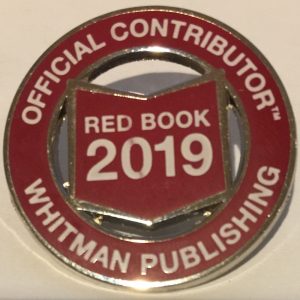 Although the 72nd edition of A Guide Book of United States Coins has been out since April, it seems like Whitman is doing a bit of behind the scenes reorganizing for the future. With Ken Bresett taking on the title of Editor Emeritus and Jeff Garrett taking over as Senior Editor, they seem to be a bit behind in some minor, but for some of us, important recognition. 😉 I finally received an Official Contributor’s pin for being a contributor to the Red Book.
Although the 72nd edition of A Guide Book of United States Coins has been out since April, it seems like Whitman is doing a bit of behind the scenes reorganizing for the future. With Ken Bresett taking on the title of Editor Emeritus and Jeff Garrett taking over as Senior Editor, they seem to be a bit behind in some minor, but for some of us, important recognition. 😉 I finally received an Official Contributor’s pin for being a contributor to the Red Book.
First, this is my public THANK YOU to Whitman for the pin and allowing me to participate!
As I did with last year’s edition, I participated in updating modern coin prices. Modern coins are those classified as being struck after 1964 when silver was removed from most U.S. coins. These are the coins that some dealers do not show a lot of love for because they are not perceived as worth the effort to sell. Although some of that has changed since the State Quarters were first introduced in 1999, the hobby should show more respect to these coins especially since we are 54 years into the modern era.
Although many feel that the Red Book’s pricing is obsolete when it comes out, it is still a good guide to understanding the foundation of pricing even if there is are market fluctuations. Thus, it would not hurt to get these prices closer to being correct, especially for new collectors. After all, this is a “guide,” not a price list.
This past year was a little different. Aside from not giving us a lot of time to enter prices (more on that later), my new business venture allows me to see the market from a dealer’s perspective. Even though I deal in general collectables and not just coins, I can now view the market from both sides of the counter.
Because of time constraints, I concentrated more on proofs and special issues than the business strike versions.
One of the reasons why the period for submitting our prices was delayed was that when Jeff Garrett took over as Senior Editor, a source said that he wanted to change a few things about how this was done. No details were provided.
I am speculating that the delay in sending out the contributor pins, which also comes with a copy of the Red Book and a Mega Red, is likely because Whitman is working diligently behind the scenes to make it easier for contributors to continue to help while giving Jeff and others a better platform for which to edit the prices.
Even though the Red Book is a good resource there are always ways to make it better. I am sure that Jeff will do a great job and hope that I can continue to contribute to the effort.
LOOK BACK: Paper v. Coin Dollars
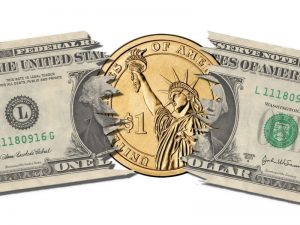 Whenever a proposal or law that creates a new dollar coin, there is always a discussion as to how to make the program more successful. In the past, the Gallup organization has polled the public on a few occasions asking about the potential acceptance of dollar coins.
Whenever a proposal or law that creates a new dollar coin, there is always a discussion as to how to make the program more successful. In the past, the Gallup organization has polled the public on a few occasions asking about the potential acceptance of dollar coins.
Regardless of the questions asked, the only way to increase the circulation of the dollar coin is to stop printing the one-dollar Federal Reserve Note and begin to withhold it from circulation. It is a move that will force the people to use the coin as the population of the paper currency is reduced.
There are many emotional arguments on both sides of the issue. Whether one is for or against the printing of the one-dollar note, the US is one of the extreme few first-world countries issue its unit currency on paper. Looking beyond the emotional arguments, each side has dominant arguments to support their positions.
Those who want to eliminate the one-dollar note use at the cost of is production and the savings to the government as the dominant reasons. According to the Bureau of Engraving and Printing, 95-percent of all Federal Reserve Note printed for circulation are used to replace damaged and worn notes that are being taken out of circulation. Using BEP’s 2017 production report, 2,425,600,000 one-dollar notes were printed. With 95-percent being replacement notes, 2,304,320,000 notes were printed just to maintain circulation levels. With it costing 4.385-cents to produce one note of any denomination, the cost to just replace notes removed from circulation was $100,422,265.60 in 2017.
Rather than printing paper dollars, if the US Mint strikes coins the cost to replace those 2.4 billion notes would cost 21-cents per coin (according to the U.S. Mint’s 2014 Annual Report, the last documenting seigniorage for the dollar coin). The total production cost would be $483,907,200.
But do not let the 381-percent increase in cost fool you. For the real picture, the costs have to be predicted over time. According to the BEP and the Federal Reserve, the lifespan of a one-dollar Federal Reserve Note is 5.8 years. When the U.S. Mint makes plans for circulating coinage, they accept that the lifespan of a coin is 30-years. To help with the calculation, it will be assumed that the price of manufacturing coins and currency s will stay constant. In order to keep the $2.4 billion of one dollar notes in circulation for 30 years, it will cost the BEP $522.6 million dollars.
By comparison, since the U.S. Mint will be striking new coins for circulation and (theoretically) not replacement coins (not including the coins already in storage), the U.S. government would save about $117 million over 30 years. The following table illustrates these costs:
| Denomination | Production Total | Number of Replacement Notes | Cost of Production for Replacements | Cost of Replacements over 30 years |
|---|---|---|---|---|
| Paper Dollar (2008) | 4,147,200,000 | 3,939,840,000 | $177,292,800 | $1,772,928,000 |
| Paper Dollar (2018) | 2,425,600,000 | 2,304,320,000 | $101,044,432 | $522,643,614 |
| Coin Dollar (2008) | N/A | 3,939,840,000 | $626,434,560 | $626,434,560 |
| Coin Dollar (2018) | N/A | 2,425,600,000 | $509,376,000 | $509,376,000 |
While this might be a compelling argument to stop printing one dollar notes, such a move has political ramifications for some powerful members of Congress. With over 1500 people working in the Eastern Currency Facility in downtown Washington, DC, they are represented by several leaders of both parties. When it comes to jobs in their districts, members of Congress will not allow anything that will reduce the production capacity of the Bureau of Engraving and Printing and where constituents could lose jobs.
Before Congress changes the law to stop the printing of the one-dollar note (31 U.S.C. §5115(a)(2)), the BEP will have to supplement production in order to protect jobs. The way this could be done would be to print foreign currency. However, it seems that the BEP is having problems selling their services to foreign governments.
Although the Bureau of Engraving and Printing has experimented with polymer notes and other printing substrates, the Federal Reserve has said that it does not consider these alternatives viable for United States currency. However, the Federal Reserve and Bureau of Engraving and Printing has been testing rag-based paper from companies that can produce new anti-counterfeiting features.
If there was a change to the supplier of currency paper, that would raise concern by the Massachusetts congressional delegation whose constituents include Crane Currency, the subsidiary of Crane & Company. Crane has been the exclusive supplier of currency paper to BEP since 1879. Although BEP has tried to open the competition for purchasing currency paper (see GAO Report GAO-05-368 [PDF]), the cost of entry into the market has prevented other manufacturers from competing for the business. If BEP would stop printing over 2 million one dollar notes without replacing it with similar paper production, the Massachusetts-based company could lose significant business.
Regardless of the measures taken by the US Mint to increase the circulation of the one-dollar coin, public perception is that the one-dollar paper note is easier to use than the coin. Unless key congressional leaders agree that ending the printing of the one-dollar note is in the best interests of everyone, including their political careers, the political reality is that printing of the one-dollar note is here to stay until a significant event causes a change in policy.
Weekly World Numismatic News for August 5, 2018
Although they note that the MacCoin has no cash value but can be redeemed for a Big Mac at participating restaurants, McDonald’s has entered the world of numismatics by issuing a five-coin set highlighting the 50-year history of the iconic Big Mac sandwich. Although each of the five coins has similar designs, with the 50th-anniversary logo on one side, the reverse has an image of the Big Mac in a setting highlighting a theme from each of its decades of existence:
- The ‘70s, showcasing the decade’s flower power
- The ‘80s alluding to pop art
- The ‘90s defined with bold, abstract shapes
- The early ‘00s specifically focusing on the technology that was at the forefront of the turn of the century
- The ‘10s MacCoin calling attention to the evolution of communication
According to cleveland.com, the coins were minted by Osborne Coinage Co. located in Cincinnati, Ohio.
In order to obtain a MacCoin you have to go to your local participating McDonald’s and purchase a Big Mac. You get one for each purchase while supplies last. More than 6.2 million MacCoins are available from McDonald’s restaurants in 50 countries including more than 14,000 participating restaurants in the United States.
It is not known whether you can ask for a specific coin or it is done by random selection. But here is a new opportunity for trade token collectors to include something new in your collection.
You can see a video of the commercial on YouTube.
And now the news…
COLUMBUS — Gov. John Kasich has asked the state Parole Board to hold a hearing on a clemency request for a former Toledo-area coin dealer who raised money for Ohio Republicans before being convicted in a state investment scandal that also ensnared a former governor.  → Read more at mariettatimes.com
→ Read more at mariettatimes.com
Rabat – On Throne Day, Morocco’s Bank Al Maghrib announced it will issue a new commemorative coin with a value of MAD 250. The announcement came on the 19th anniversary of King Mohammed VI’s ascension to the throne.  → Read more at moroccoworldnews.com
→ Read more at moroccoworldnews.com
Maritime archaeologists have made an astonishing discovery off the Kent coast in England. While investigating an almost three-hundred-year-old shipwreck they found some coins that had been sewn into clothing.  → Read more at ancient-origins.net
→ Read more at ancient-origins.net
"The legendary taste of the Big Mac has helped it achieve universal recognition and a lasting legacy," Susie Stames, a Cleveland-area McDonald's owner-operator, said in a statement. "Over my family's [55-year] tenure with McDonald's, Big Mac fans have enjoyed two all-beef patties, special sauce, lettuce, cheese, pickles and onions on a sesame seed bun with a flavor that's just as craveable and delicious today as it was back then."  → Read more at cleveland.com
→ Read more at cleveland.com
A California firearms instructor's search for a lucky coin missing at Anchorage's airport has left him grieving the loss. Gary Peters carried the Eisenhower dollar in his pocket every day for 34 years — ever since his daughter gave it to him when she was 5.  → Read more at adn.com
→ Read more at adn.com
An IT contractor has been jailed for stealing tens of thousands of dollars in gold bars and coins and smuggling them out of the Perth Mint, in order to fund his lavish lifestyle and "shower his partner with gifts".  → Read more at mobile.abc.net.au
→ Read more at mobile.abc.net.au
Did someone say something about a square con?
With the flurry of legislative action last month, the only bill that I commented on was the American Innovation $1 Coin Act (Public Law No: 115-197) because it was the only one that is the law. The others were just introduced and may not be passed out of committee.
But that has not prevented speculation and discussion about the potential for these potential commemorative coins. Based on the email buzz, the two bills of interest are the Integration of Baseball Commemorative Coin Act (S. 3283 and H.R. 6469) and the Carson City Mint 150th Anniversary Commemorative Coin Act (H.R. 6221).
Regarding the Integration of Baseball Commemorative Coin Act, someone decided that the coins would be square and that has infested the numismatic media. This is not what the bill requires. In fact, the bill says that the “design on the common reverse of the coins minted under this Act shall depict a baseball diamond similar to those used by Major League Baseball.”For those commentators who cannot read simple English, it says that the design “shall depict a baseball diamond.” Nowhere in that sentence does it say that the coins have to be shaped like the baseball diamond. A depiction and the shape of a coin are two different concepts.
Trying to understand where the idea that the coins would be square, a review of the official statement issued by Sens. Tim Scott (R-SC), Cory Booker (D-NJ), and Rep. Roger Williams (R-TX) as co-sponsors does not mention the shape of the coin.
What might have confused the issue was a report in The Hill that former Montreal Expos and Chicago Cubs legend Andre “The Hawk” Dawson talked about the coin minted in the shape of home plate. While Dawson was a great ballplayer and earned his place in the Baseball Hall of Fame, he is not a member of Congress and, apparently, did not read the bill.
The commentary about the shape does not take into consideration what the bill actually says. Aside from talking about it like it will be the law, it does not take into consideration that the bill is now in committee with less than 90-days to go until the mid-term elections. Without turning this into a political analysis blog post, there will be contention regardless of the outcome of the election. With the late introduction of this bill and the current political environment, the likelihood of this bill passing both chambers before the end of the session is highly unlikely.
A correspondent asked “Wouldn’t it be cool if the Carson City commemorative coins were struck in Carson City?” It does not matter if it is a good idea or not unless Congress changes the law, specifically 31 U.S. Code § 5131 that defines where the branches of the U.S. Mint are located, Carson City is not authorized to strike coins. Unless Carson City is added to that list, even temporarily, the U.S. Mint cannot strike any coins in Carson City. Further, the building that was once a branch mint is no longer owned by the Federal Government. Ownership was transferred to the State of Nevada that runs it as part of the Nevada State Museum.Even though the first press used in Carson City is located in the museum, it may not meet the specifications that are required of the U.S. Mint to strike modern commemorative coins. And both the press and building are not owned by the United State government, a fact that would make those who provide oversight of the U.S. Mint’s operations a bit nervous.
While these “what if” questions might make good parlour or message board discussions, allegedly responsible industry journalists and pundits should know better.

